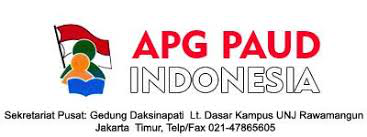Nak-Kanak: Journal of Child Research is published four a year. Articles published in this journal are the results of empirical research in early childhood education.
Editors invite experts, practitioners and enthusiasts in psychology to write a research article in this journal. Articles should be original, research-based, unpublished and not under review for possible publication in other journals. All submitted papers are subject to review of the editors, editorial board, and blind reviewers. Submissions that violate our guidelines on formatting or length will be rejected without review.
The article has been formatted according to the pattern of writing scientific journal articles. Writing articles follow the rules set out in the Publication Manual of the American Psychological Association, Seven Edition. http://www.apastyle.org/manual/index.aspx
Articles sent to the Editor of Nak-Kanak: Journal of Child Research via submission Open Journal Systems (OJS) on https://journal.trunojoyo.ac.id/nakkanak/
General instructions
- Articles are formatted according to the writing pattern of scientific journal. Writing articles follow the rules set out in Publication Manual of the American Psychological Association, Sixth Edition. http://www.apastyle.org/manual/index.aspx
- The article is an original work (no plagiarism) and has never been published in a journal printed/online.
- Articles for Nak-Kanak: Journal of Child Research sent to Editors via submission Open Journal Systems (OJS) on https://journal.trunojoyo.ac.id/nakkanak/
- Articles typed in Times New Roman letters with 1 spacing in Microsoft Word format with a page size A4 (210 x 297 mm). The length of the article ranged between 5000-6000 words, or about 10-15 pages, including pictures, graphs, and tables (if any). Articles written in Bahasa Indonesia or English by using the rules of good grammar and correct. Articles in English in general use the past tense.
- Article is written in Indonesian or English using grammatical rules. In general, English article is in the past tense.
- The article is the result of empirical research in Early Childhood Education.
- Because of "Blind Review" system, the the author hoped not to includ the name, the name and address of the institution and email address in the cover of article. The author's name, name of the institution, as well as the email address listed at the time of registration on the OJS author. To facilitate the communication should include active mobile number.
- Articles for Nak-Kanak: Journal of Child Research must be citation from Nak-Kanak: Journal of Child Research min 1 citation.
Structure
The content and systematics of articles written using the format presented in a narrative essay in the form of a paragraph, without numbering in front subtitles, and should include these components:
- The title, provided that: a) The title is the formulation of a brief discussion of content, compact, and clear. May use the title of creative and attract readers (maximum 18 words). b) The title is written in English or Indonesian. c) The title is typed in bold capital letters (capital, bold).
- Abstract written in English and Indonesian. Abstract is the essence of the subject of the whole article. Abstract written in one paragraph within one space, with a maximum length of 200-250 words. Abstract presented briefly and clearly, it must contain four (4) elements, namely: Reasons for the selection of topics or the importance of the research topic, the hypothesis, research methods, and a summary of the results. Abstracts must be terminated with a comment about the importance of the results or a brief conclusion.
- The keyword contains basic words in the study, can be drawn from the research variables, characteristics of the subjects, and the theory of the referenced (minimum three words or combinations of words, written in alphabetical order).
- Introduction (untitled) contains background of the problems, objectives and benefits of the research, the study of theory, and concludes with the hypothesis (number of pages approximately 20%).
- The method contains the identification of the variables, the research subjects, research instruments and methods of research including data analysis techniques used (the number of pages approximately 20%).
- The result shows exposure data analysis, consisted of descriptive statistics, test results of the assumptions and results of hypothesis testing are presented sequentially or integrated (number of pages approximately 20%).
- Discussion contains an explanation of the results of research associated with the results of previous studies, critically analyzed and linked to relevant recent literature (page number approximately 30-40%).
- Conclusions and suggestions answers from the research objectives written concise, clear, and compact based on the results of research and discussion (approximately 1 page).
- Bibliography contains reference sources written alphabetically and chronologically. The Bibliography should use Mendeley with the APA (American Psychological Association) style 7th edition. The bibliography is sorted according to the first letter of the author's last name (A-Z). All referenced literature must use primary sources with a percentage of 80%, and secondary sources with a percentage of 20%. Bibliography takes precedence over articles taken from the latest journals or publications (no longer than 5 years) prior to submission of articles (paper submission) with an active DOI of at least 30 references. Library sources must also be taken from accredited national journals (Sinta) and reputable international journals (Scopus).
The following are examples of bibliography writing:
Article
Mishra, L. (2012). Parental Involvement in Early Childhood Care Education: a Study. International Journal of Psychology and Behavioral Sciences, 2(2), 22–27. https://doi.org/10.5923/j.ijpbs.20120202.04
Zeynep, K. (2016). Analyzing Parental Involvement Dimensions in Early Childhood Education. Educational Research and Reviews, 11(12), 1149–1153. https://doi.org/10.5897/err2016.2757
Hasni, U., & Amanda, R. (2022). Pengembangan Model Pembelajaran Project Based Learning Untuk Meningkatkan Kemampuan Geometri Anak Usia 5-6 Tahun. Jurnal PG-PAUD Trunojoyo: Jurnal Pendidikan dan Pembelajaran Anak Usia Dini, 9(1), 1-11. https://doi.org/10.21107/pgpaudtrunojoyo.v9i1.13537
Book
Purnama, S. (2020). Penelitian Tindakan Kelas. Rosdakarya.

